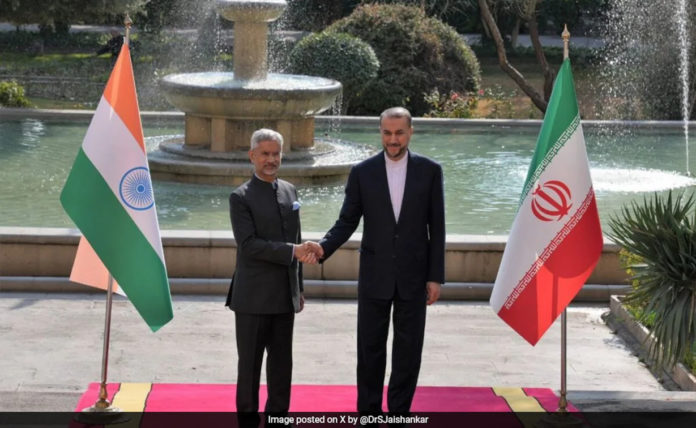Iran’s partnership with India on the Chabahar port unveils an intriguing strategy to outmaneuver regional rivals, diminish Pakistan and China’s influence, and elevate its geopolitical dominance and economic resilience.
Iran’s decision to hand over the Chabahar port to India, despite having the option to collaborate with China, underscores a nuanced and strategic shift in its geopolitical calculations. This move not only highlights Iran’s intent to diversify its international partnerships but also reveals a deeper strategy aimed at enhancing its regional dominance, economic interests, and strategic autonomy.
By partnering with India on the Chabahar port, Iran mitigates the risk of over-reliance on China. Although China has committed over USD 400 billion in investments in Iran, engaging with India allows Iran to leverage multiple powerful allies, ensuring economic and geopolitical benefits from various sources. This diversification helps Iran avoid over-dependence on a single major power and enhances its negotiating power on the global stage.
Iran’s collaboration with India also serves as a countermeasure to Pakistan’s regional influence. Chabahar directly competes with Pakistan’s Gwadar port, which is a significant component of the China-Pakistan Economic Corridor (CPEC). By developing Chabahar with India, Iran undermines Pakistan’s strategic and economic position and comes out as the strategic counter to China’s Belt and Road Initiative (BRI). This move aligns with Iran’s broader regional goals of limiting Pakistan’s influence and expanding its dominance vis-à-vis the formation of a protostructure of a possible US-India-Iran nexus.
Despite shared interests with China, Iran’s strategic decisions are driven by immediate practical benefits. Chabahar offers Iran direct access to the Indian Ocean, facilitating trade with Central Asia and beyond, bypassing Pakistan, becoming the new junction for the Middle East, South and Central Asia. This is particularly crucial given the volatile security situation and political instability in Afghanistan and Pakistan. Chabahar provides a stable and secure route for Iranian trade and transit, enhancing its economic resilience.
The control over critical transit routes generating approximately USD 15 billion annually from Central Asian states spotlights the economic importance of Chabahar. Iran has been exploiting this revenue stream for over 32 years. By maintaining control over these transit routes, Iran keeps Pakistan and Afghanistan engaged against each other, ensuring they do not cooperate to divert this lucrative trade through their own ports, which would bypass Iran entirely.
Iran’s pragmatic approach to foreign policy has been consistent. As noted by former British Prime Minister Tony Blair, understanding Iran’s strategic decisions requires a nuanced reading of history. Iran has often supported Western strategic interests, despite its ideological posturing. This historical pragmatism reflects Iran’s adeptness at prioritizing its national interests over ideological commitments when beneficial.
Iran’s geopolitical maneuvers also include marginalizing Sunni-majority states in the region. Through its involvement in conflicts in Syria, Iraq, and Yemen, Iran has extended its influence over these areas, often against Sunni opposition. By fostering instability or direct conflict between Pakistan and Afghanistan, Iran indirectly weakens potential Sunni adversaries on its borders, thereby consolidating its influence.
Iran’s strategic use of proxies and regional alliances has broader implications. In Syria, a Sunni-majority country, the Alawite minority (a branch of Shia Islam) rules with Iran’s support. This pattern of supporting Shia factions extends to Iran’s involvement in Iraq and Yemen, showcasing its long-term strategy of expanding Shia influence and reducing Sunni power blocs.
In conclusion, Iran’s strategic partnership with India on the Chabahar port underscores a sophisticated and calculated effort to strengthen its regional dominance, economic interests, and strategic autonomy. This move epitomizes Iran’s skillful navigation of a complex geopolitical landscape, leveraging strategic counterbalancing to further its national interests while repositioning itself globally. Understanding these dynamics is essential to grasp the broader regional implications of Iran’s actions and the shifting alliances in the Middle East and South Asia. As these alliances evolve, what new power dynamics and geopolitical shifts will emerge in this already volatile region?




